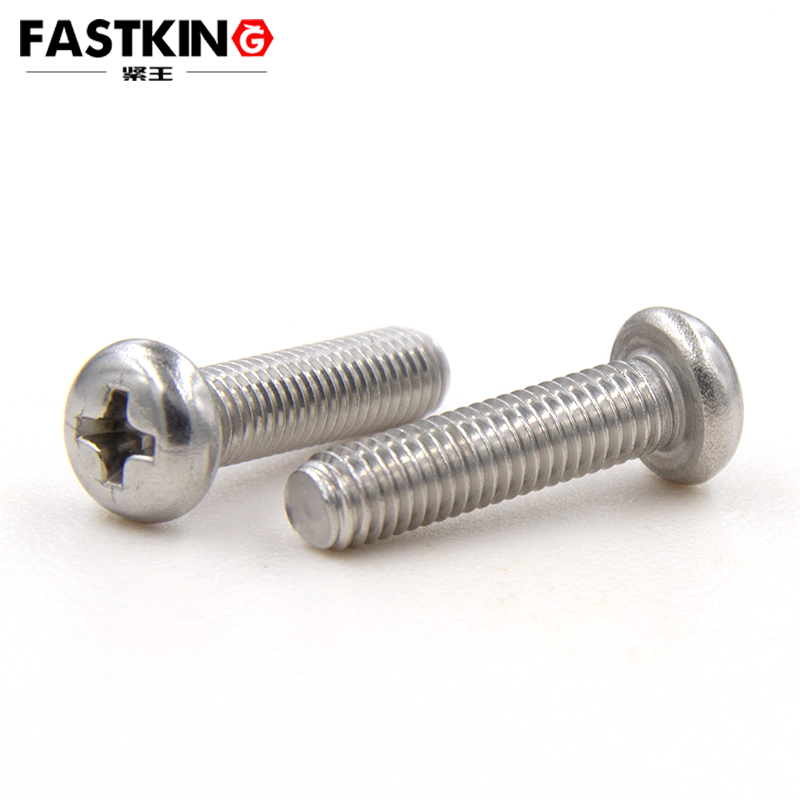In the manufacturing and repair of modern electronic devices, screws play an indispensable role as fasteners. Among them, flat head cross-head electronic screws are widely used in the assembly and maintenance of various electronic devices due to their small size, reliable fastening performance, and ease of operation.

Technical Features of Flat Head Cross-Head Electronic Screws
Flat head cross-head electronic screws are manufactured using precision machining processes with strict dimensional tolerances and surface treatment requirements. The flat head design provides a larger contact area, which helps distribute pressure during fastening and prevents damage to precision electronic components. The cross-head design ensures that the screwdriver can apply force accurately, achieving stable torque control.
These screws are typically made from stainless steel or alloy steel and undergo heat treatment and surface plating to offer excellent corrosion resistance and mechanical strength. They can maintain stable performance in the harsh working environments of electronic products over the long term.
In terms of specifications, the diameter, length, and pitch of flat head cross-head electronic screws are strictly standardized. Common sizes include M1.0, M1.2, M1.4, M1.6, M1.7, M2.0, M2.3, M2.5, M2.6, and M3.0, with lengths ranging from 1.5 mm to 12 mm to meet the assembly requirements of different electronic products.

Proper Usage Methods and Precautions
Choosing the right screwdriver is the first step in using flat head cross-head electronic screws. The screwdriver size must match the screw slot perfectly; otherwise, it may cause stripping or damage to the screw. It is recommended to use a professional precision screwdriver set to ensure the right tool is available each time.
Torque control is crucial. Excessive torque can strip the screw or damage the threads, while too little torque may compromise the reliability of the connection. It is advisable to use an electric screwdriver with adjustable torque settings and set the torque value according to product requirements. For particularly precise assemblies, a torque tester can be used for calibration.
Preventing loosening is key to ensuring long-term reliability. Common methods include using threadlock, spring washers, or double nuts. In vibration-prone environments, specialized anti-loosening solutions such as pre-applied threadlock screws or special anti-loosening structural designs are recommended.

Application Scenarios and Case Analysis
In consumer electronics like smartphones, flat head cross-head electronic screws are used to secure key components such as the motherboard, battery, and camera module. For example, a flagship smartphone from a certain brand uses over 50 screws of different specifications to ensure the stability and serviceability of the device.
In the field of industrial control equipment, these screws are used to fasten PCB boards, connectors, and enclosures. A particular industrial PLC controller employs specially corrosion-resistant flat head cross-head electronic screws to ensure long-term reliable operation in harsh industrial environments.
The requirements for screws in medical electronic devices are even stricter. In a high-end medical imaging device, specially surface-treated flat head cross-head electronic screws are used, not only meeting the hygiene requirements of medical devices but also ensuring their long-term stability and safety.
Though small, flat head cross-head electronic screws play a significant role in the modern electronics industry. As electronic products continue to evolve towards lighter, thinner, and more precise designs, the demands for these micro fasteners will only increase. In the future, the application of new materials and processes will further enhance the performance of flat head cross-head electronic screws, providing more reliable support for the innovation and development of electronic products. In the field of precision manufacturing, these "invisible guardians" will continue to play an irreplaceable role, driving the electronics industry forward.
